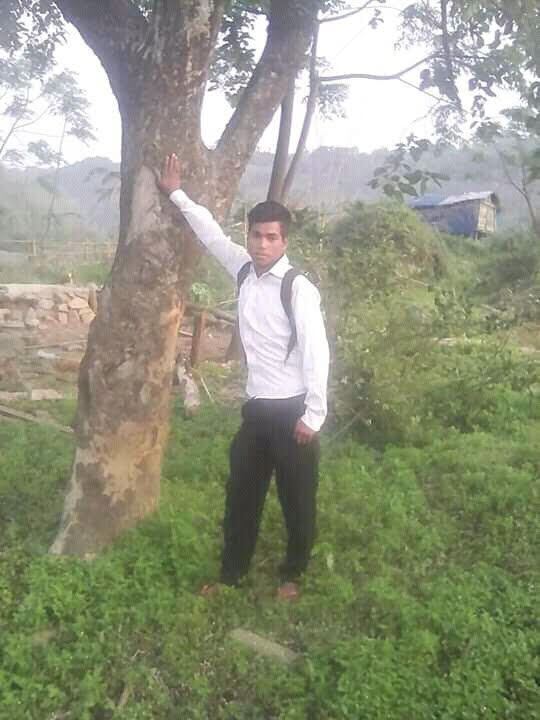
views
Smoking a bidi and staring into the distance, Alek Singer waits patiently under a makeshift shed for labourers, hoping to hear some news of his brother Shalabas Dkhar who went down the ‘rat-hole’ coal mine at Ksan in Meghalaya’s East Jaintia Hills district. Shalabas, 20, was one of three boys from Lumthari village deployed at the illegal coal mine — they are stated to be missing since December 13.
“It was his first time inside a mine. He had never done such a thing before and had not told anyone about it. I was working at the farms in a different basti and had not spoken to him for months. I rushed here when I got the news. I don’t know what to expect,” says Alek.
Alek is carrying a photo ID card of Shalabas and the Certificate of Baptism conferred to him by a priest from the Holy Trinity Parish in Sutnga, Jaintia Hills. Through the shattered glass of his mobile phone, he points at a picture of his brother and the other boys from his village. "My brother used to earn good money for the family. We never thought he would go for mining. He's there inside the mine, and until he is found, I will wait here," says the teary-eyed brother.

Shalabas Dkhar has been trapped in the coal mine since December 13.
Several other villagers from Lumthari are also at the site, and Alek shares with them every detail about the rescue operation. He spends his nights stationed under a shed or wherever he finds space, and every morning some kind villager would get him food. Two cousins from the same village — Dimonne Dkhar and Melambok Dkhar — are also among the 15 labourers missing.
The mine, located deep inside the forest, was a carefully chosen hideout of the coal mafia operating in the area. There is no road, but a muddy stretch of 10 km that leads to the mining site interspersed by a flowing stream at three places.
From the surface, when one looks down into the almost 350-feet deep mine, emptiness stares back. It is difficult to imagine a darker place where light of the outside world would never reach. It was here that the 18 labourers were working for the illegal mining group, not anticipating the danger. While three managed to survive, others were not so lucky.
Three helmets were recovered on the first day of the rescue operation and have been kept at the site near the freshly mined coal — a grim reminder of how the workers must have toiled inside for a few hundred rupees.

Helmets recovered on day 1 of the rescue operation.
The National Disaster Response Force (NDRF), State Disaster Response Force (SDRF) and civil administration are working relentlessly, but the water level inside the mine remains the same. It needs to decrease to 30 feet from the ground to enable the rescue teams to operate. Nine NDRF divers are engaged in the mission and they go deep inside the depths of the mine every day for 2-3 times. The divers can stay underwater for as long as 30 minutes.
“It is very disappointing that the water level in the shaft is not receding. It remains the same as it was on first day. The administration is sparing no effort to pump out water from the shaft. Mining experts have also shared their views and advised us to procure effective pumps that can at least pull out 500 gallons per minute. Water resource officials say more than 1,500 kilo litres water has been pumped out so far. But the water level has not receded,” says NDRF Assistant Commandant Santosh Kumar Singh, who is leading two rescue teams at the site.
“This is an unregulated mine with no map. But we have ensured that there is no one in the main shaft. If there are people, they are in the lateral mines. But no one knows where they are, in which direction and how deep in the mine. The local mine sirdars or labourers can also not tell,” he adds.

Rescue team at work.
Two water pumps and two 25KV generators are presently working at the site. But the unavailability of sufficient motors has hampered work. The administration has an old pump of 25 HP, which according to rescue officials, is not sufficient to pull out water from a single shaft.
Locals say more than 90 mines are present in the Saipung river valley alone, and water would be pulled out simultaneously for a month from each shaft of these mines.
“After testing pH value of water from this particular mine shaft and other abundant mines, and the river Lytein itself, it was found that the water inside is the same as in the river. So it is not receding,” says NDRF officer Singh.
Mine expert Jaswant Singh Gill who had rescued 65 men trapped inside a colliery in West Bengal in 1989 visited the site and held a discussion with NDRF personnel and district administration officials.
“Rescue operation is moving in the right direction and I am hopeful that things will be in order within two to three days. The water entered through the river, something that the labourers never anticipated,” says Gill, who is committed to help till “the last man is found”.
Rescue teams are also keeping a close watch on the water surface and the main shaft, hoping to retrieve a body that might come floating to the surface.
Meanwhile, the investigation continues and police arrested the main accused, Jrin Chullet, the night after the incident. A case has been registered against Chullet at the Saipung police station. According to Sylvester Nongtnger, Superintendent of Police, East Jaintia Hills, two of Chullet’s accomplices are currently absconding. Police are also on the lookout for the mine sirdar who has been identified as one hailing from Assam.
















Comments
0 comment